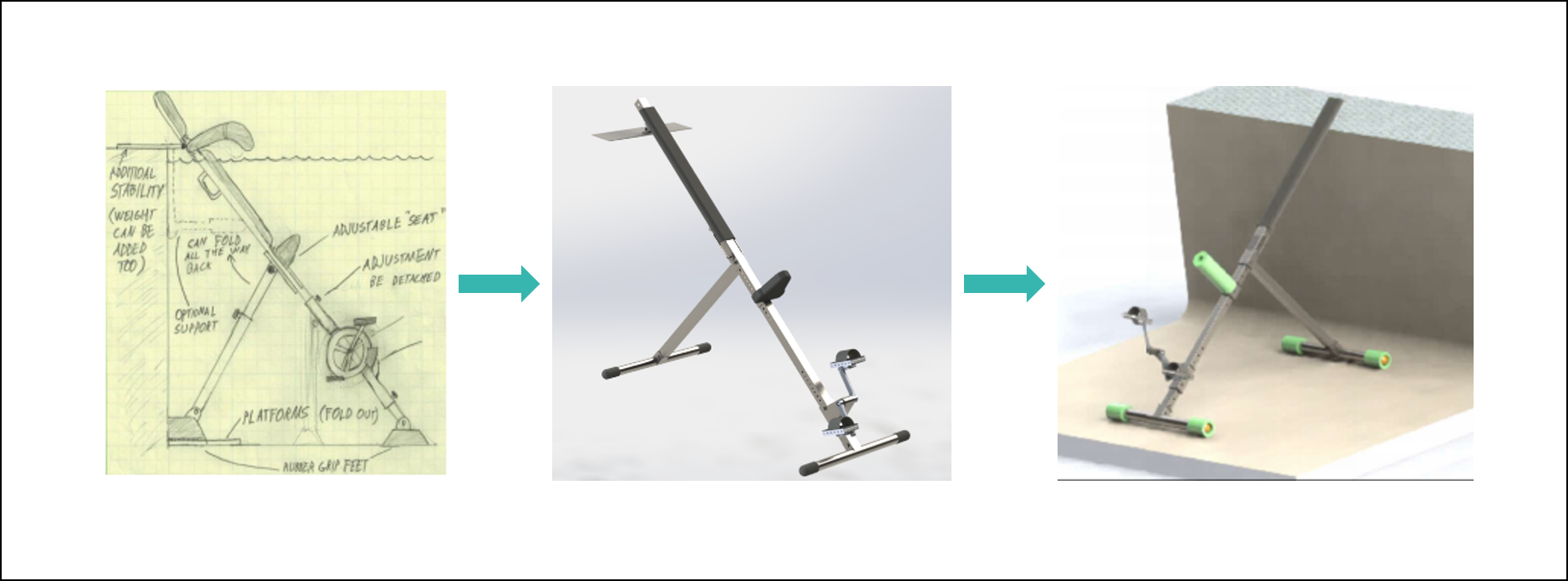Cerebral Palsy Rehabilitation Product Design & Fabrication
Undergraduate Capstone Project
Project Goal
The primary goal of this project was to create an underwater stationary cycle that allows clients with cerebral palsy to exercise in a pool environment. Another requirement for the device was discrete and adjustable resistance levels for the pedaling system.
Challenges
Comfort was one of the most important customer requirements and it was imperative that this criterion was specifically defined for the design. Stability and overall safety of the device were also essential criteria when considering the design options. Additionally, proper material selection was key in order to avoid corrosion or embrittlement issues which could lead to buckling and device failure.
Ease of manufacturing was another key concern, as excessive complexity and tolerances on machined parts could have set the project back significantly. Ease of operation and the weight of the device also needed to be optimized when designing the product. One specific challenge was that the purchased stainless steel square rods used to adjust the device height did not come in sizes that allowed them to slide within each other with minimal clearance.
My Solution
In order to endure a chlorinated water environment, which is highly corrosive, 316L stainless steel and Delrin were chosen as the primary materials. Additionally, a sacrificial zinc anode was attached to the rear support of the cycle. 3D-printed sleeves were fabricated as well in order to better secure the adjustable stainless steel rods. Also, the resistance could be easily increased by extending a custom insert from the pedals.
Minimal required support was included in the final design which reduced the device’s weight without sacrificing user safety. Velcro belts with emergency releases and padding were also added to the device for user safety and comfort. Finally, design verification tests were conducted to ensure that all the client’s requirements were met.
Notable Features & Accomplishments
- Implemented QFD, DFMA, and DFMEA protocols to quantify client needs, reduce production time, minimize costs, and identify potential system failures.
- Designed all parts and assembles in SOLIDWORKS. In addition, design drawings were constructed using GD&T standards.
- All device parts could be easily assembled and disassembled within 6 minutes.
- The product was portable and weighed about 60 pounds.
Skills Used
- 3D Printing
- CNC Mills
- CNC Drills
- DFMA
- DFMEA
- Product Design & Development
- Reliability Testing & Analysis
- CAD (SOLIDWORKS)
- GD&T
- Rapid Prototyping
- MATLAB
- Stress Analysis


